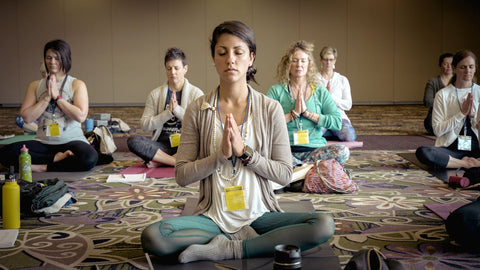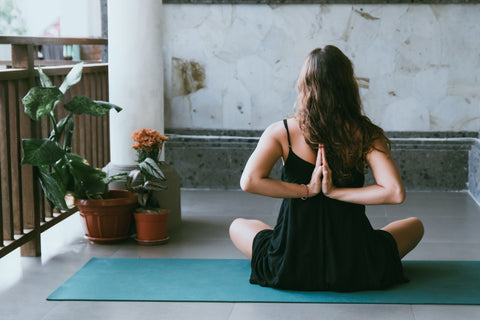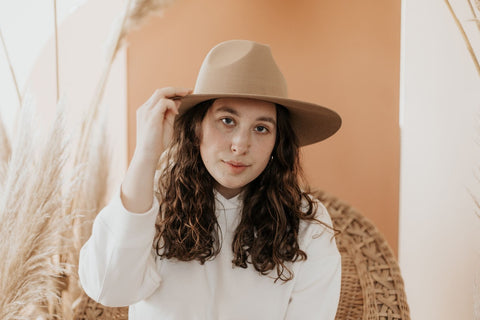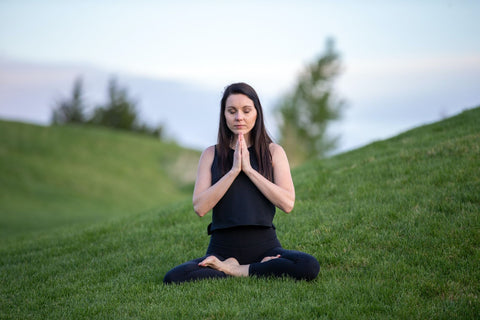One of the best ways to level up your practice is to refine the foundational yoga poses you learned in your first yoga classes. From downward dog to warrior one and lizard pose, you can perform little variations that’ll take your practice slightly up in difficulty while improving your all around practice.
Asana, the physical practice, encourages us to turn inward and deepen our connections to our body and mind. For example, I once took a class where we had to do a 25 breath hold of tadasana (standing mountain pose). By the end of it, I was sweating and shaking but also deeply aware of how my body works together to create stability and strength.
To enhance your practice in difficulty and your own connectivity, incorporate this series into your at home yoga routine:

- Stand at the top of your mat with your feet directly under your hips.
- Connect to your breath (ujjayi breath if that’s something you practice).
- Rock slightly back onto the fronts of your heel bone so that you can lift all ten toes. Starting from the pinkie side outwards, place each toe down on the mat. Grip the mat with your feet to activate pada bandha (the foot lock).
- Lift your kneecaps by activating your quads.
- Press down into your feet and isometrically try to split your mat lengthwise down the middle. Notice the sensation in your outer hips.
- Press down through your inner heel and slightly spiral your inner thighs toward the back of the room. Notice the sensation in your inner thighs.
- Keep the strength and activation in your legs.
- Lengthen your sitz bones and the flesh of your seat down toward the earth.
- Lift and engage through your lower belly and the skin at your lower back as if it is moving up toward your shoulder blades.
- Keep a soft but firm belly as you lengthen up through your heart center. At the same time, feel your shoulder blades slide down your back and widen.
- Soften the skin at the base of your neck.
- Rotate your palms forward and lengthen down through your fingertips. Reconnect to the space across your chest and shoulders.
- Lengthen up through your neck.
- Align your earlobes over your shoulders.
- Soften your jaw and the skin of your face.
- Breathe into the strength and stability of your fully activated mountain pose.
Congratulations! You made standing hard. “Advanced” yoga is less about what the pose looks like and more about how the pose feels. This applies for even the most difficult yoga poses!

Focusing on refining alignment and activation in “beginner” poses helps to create physical strength and body awareness that’s needed for more challenging asanas. Several of the lineages of yoga intentionally designed their progression of poses to tap into this concept. These starting poses are often considered beginner, but foundational is a much more accurate word and even applies to those tricky ashtanga yoga poses. Feeling deeply into these poses is an invitation to pay attention and grow.
Mastering advanced yoga poses isn’t magic—it’s practice. Returning to your mat, again and again, to connect to your body and your inner world takes your practice to a new level.
About the Author

Lindsey Hammond is a recovering perfectionist, educator, and world traveler who believes wholeheartedly in the power of yoga to create kindness and peace. No matter where in the world she is, she connects deeply and authentically with her students to help them find both inner and outer strength.






